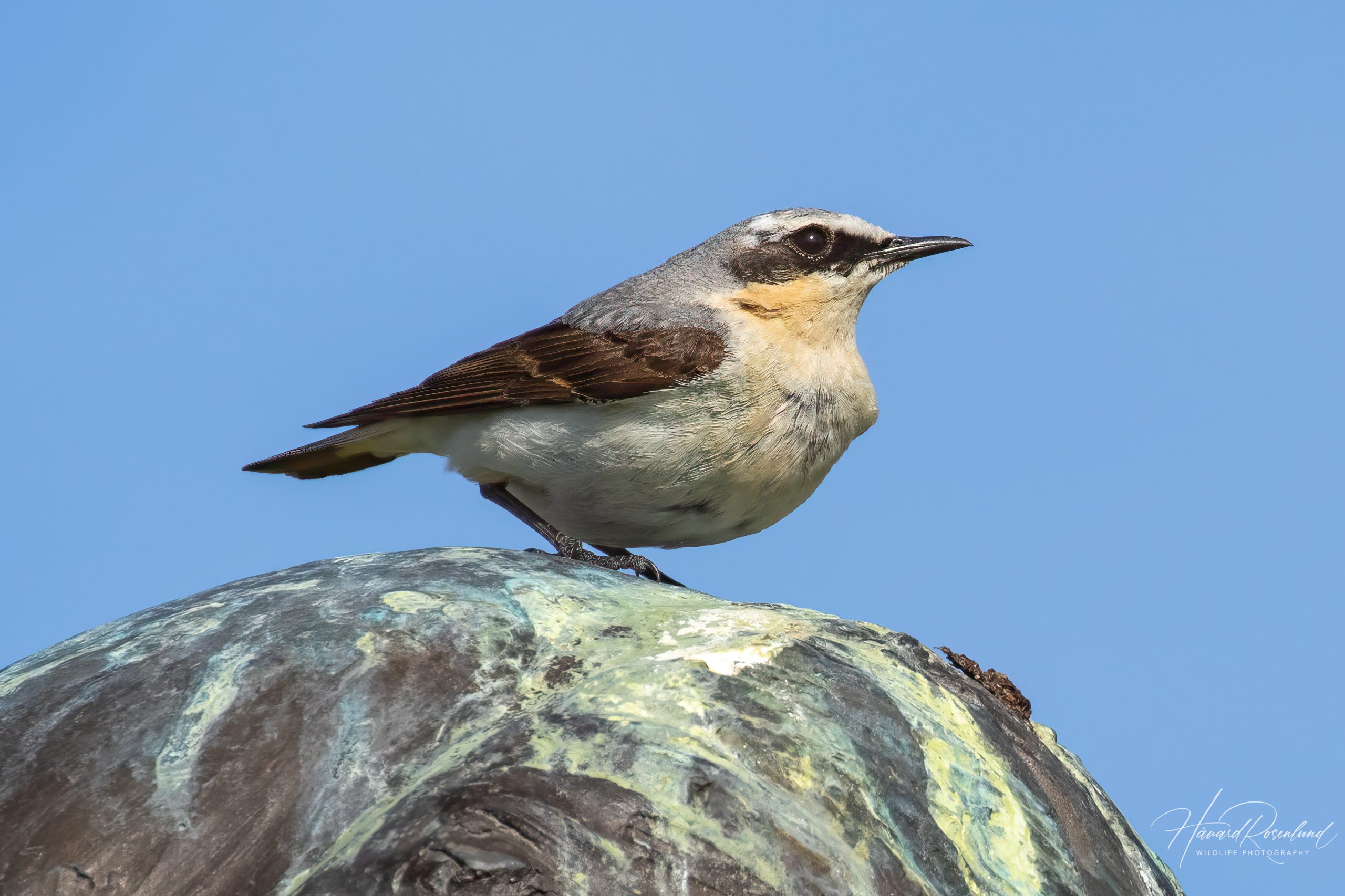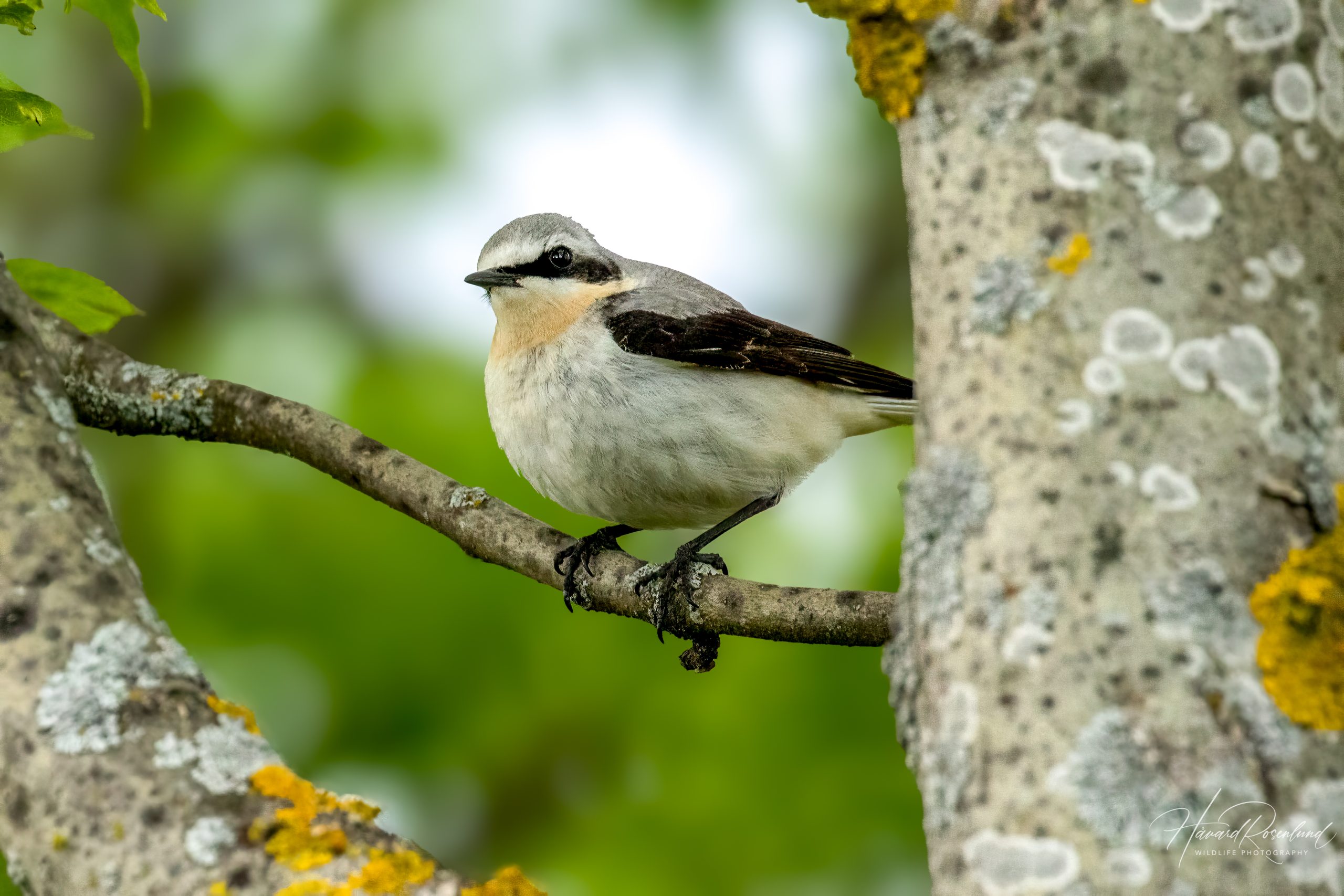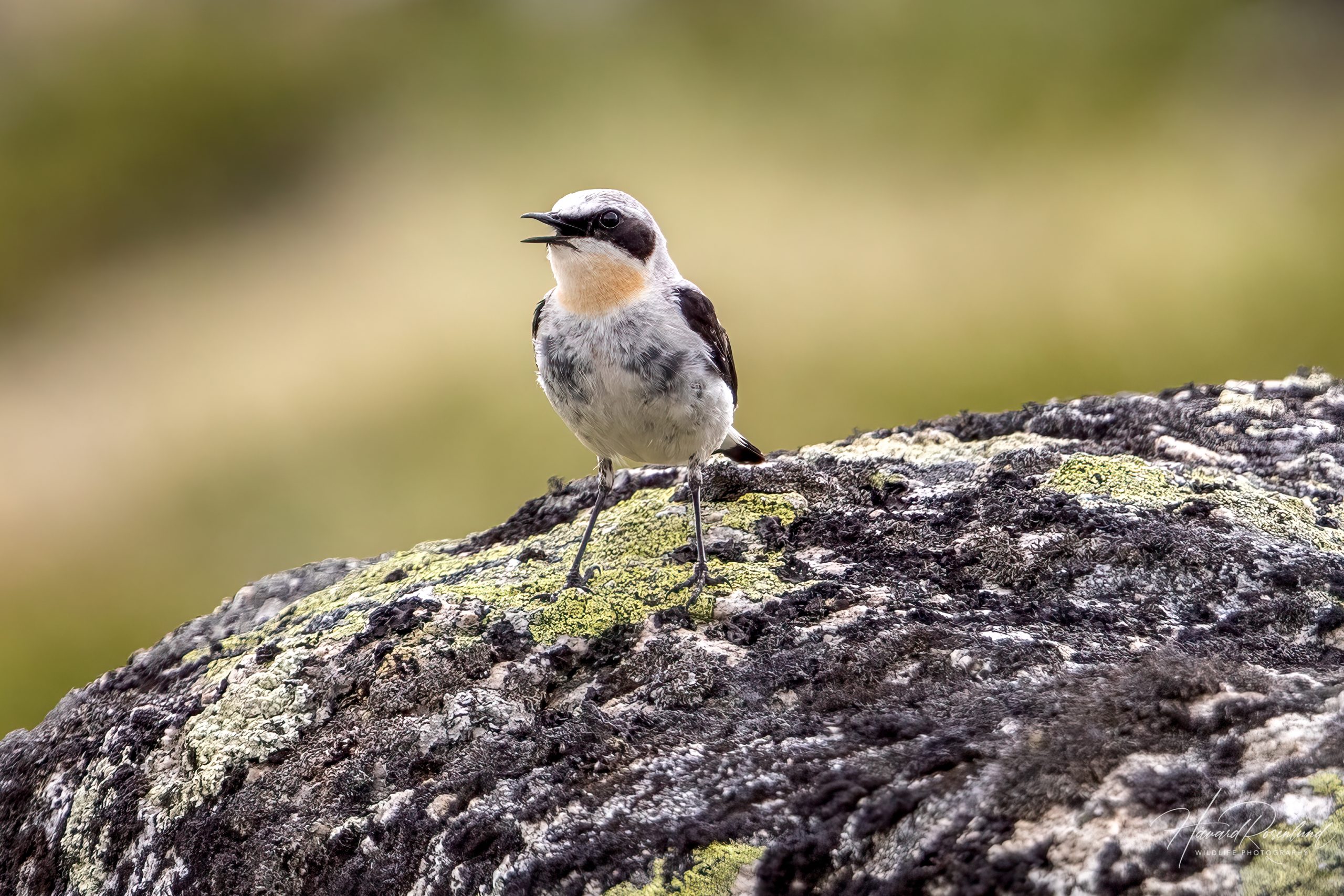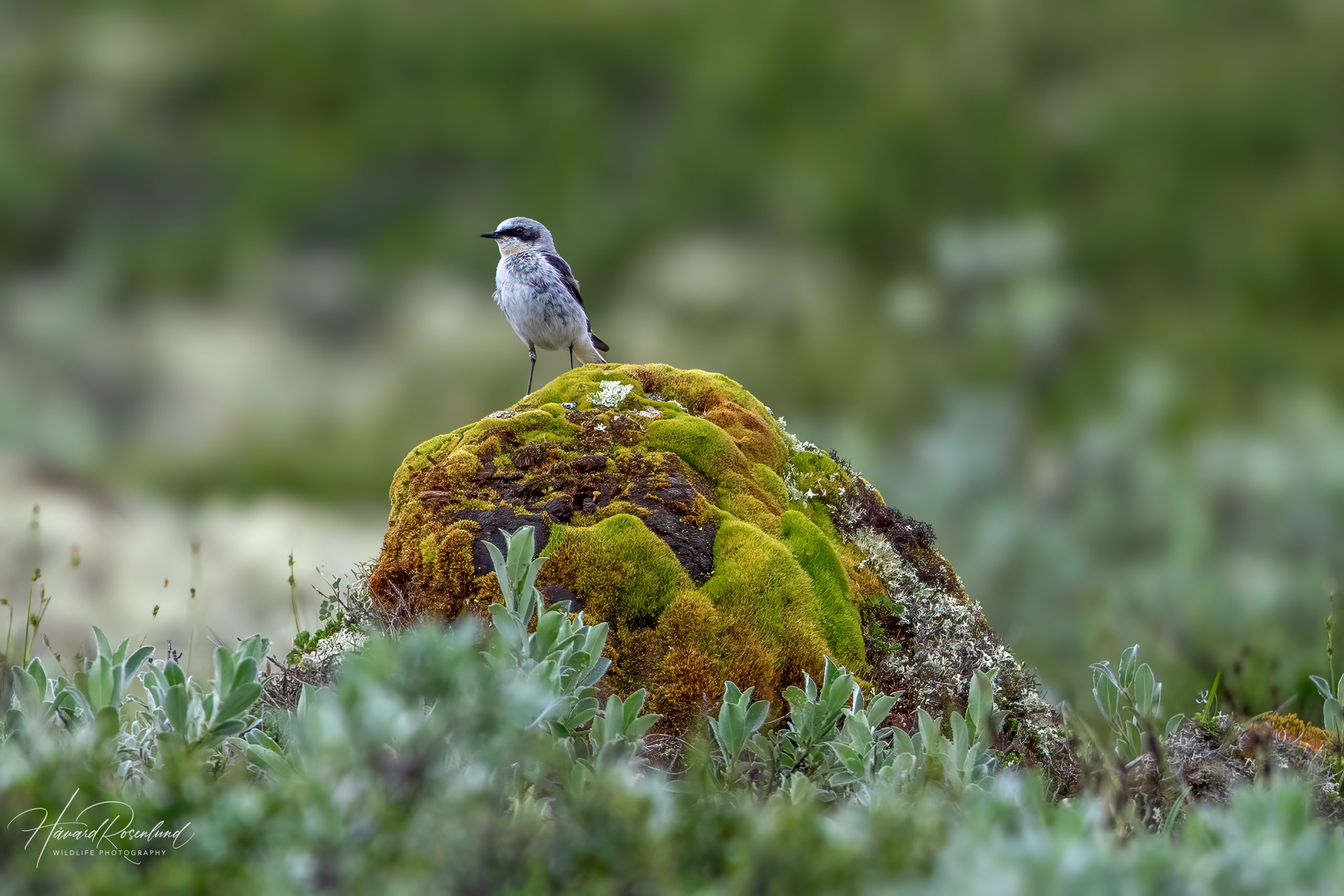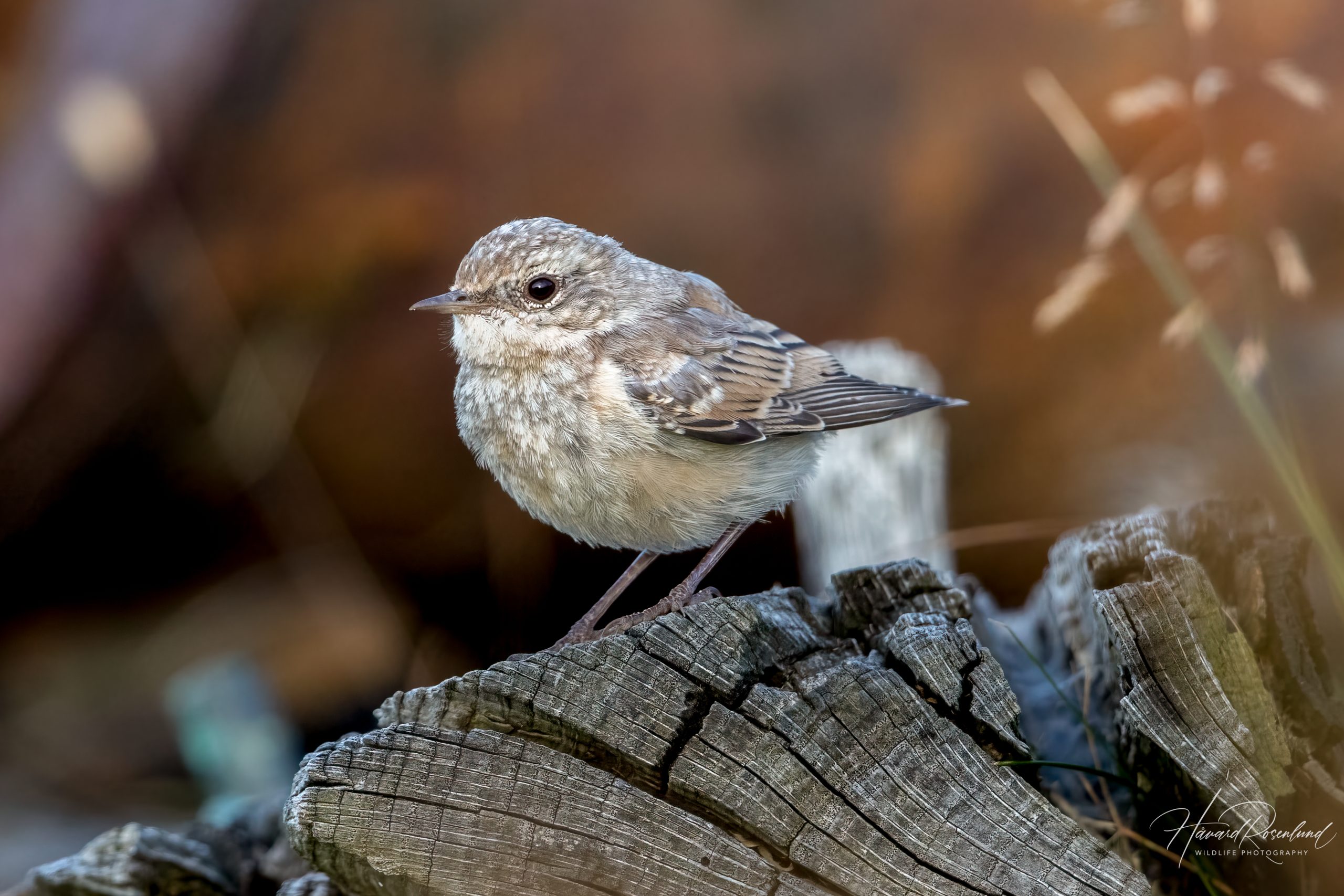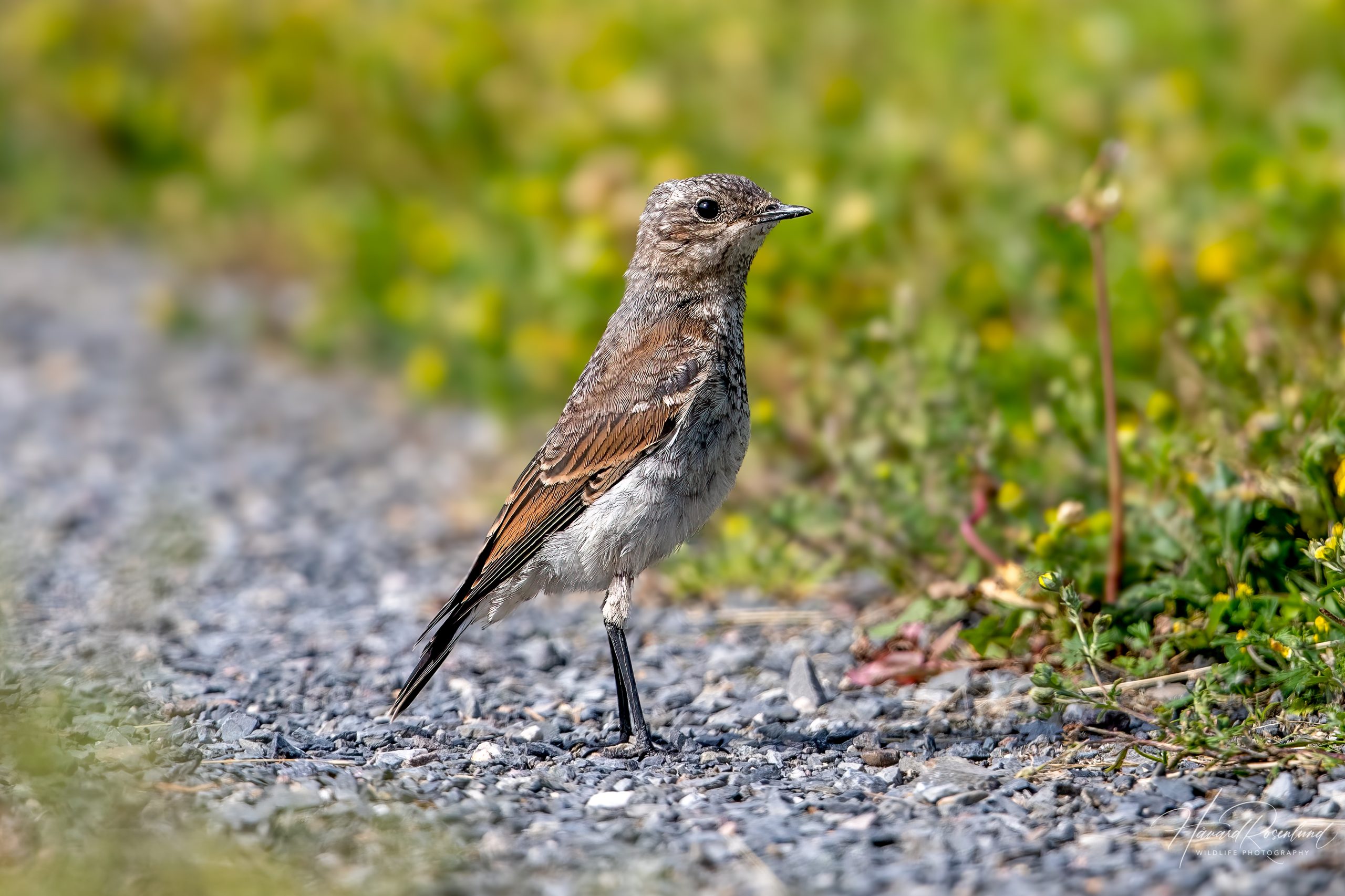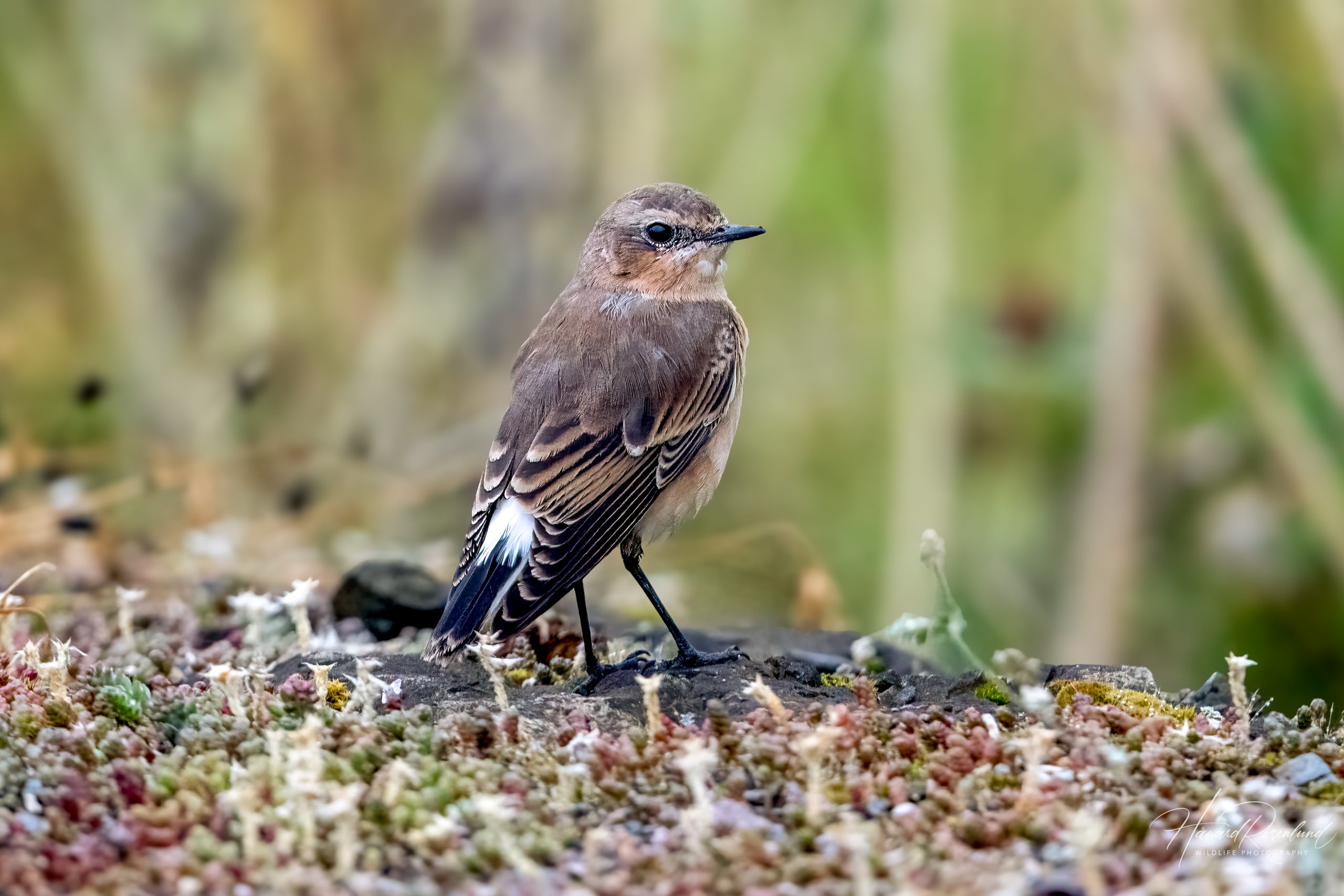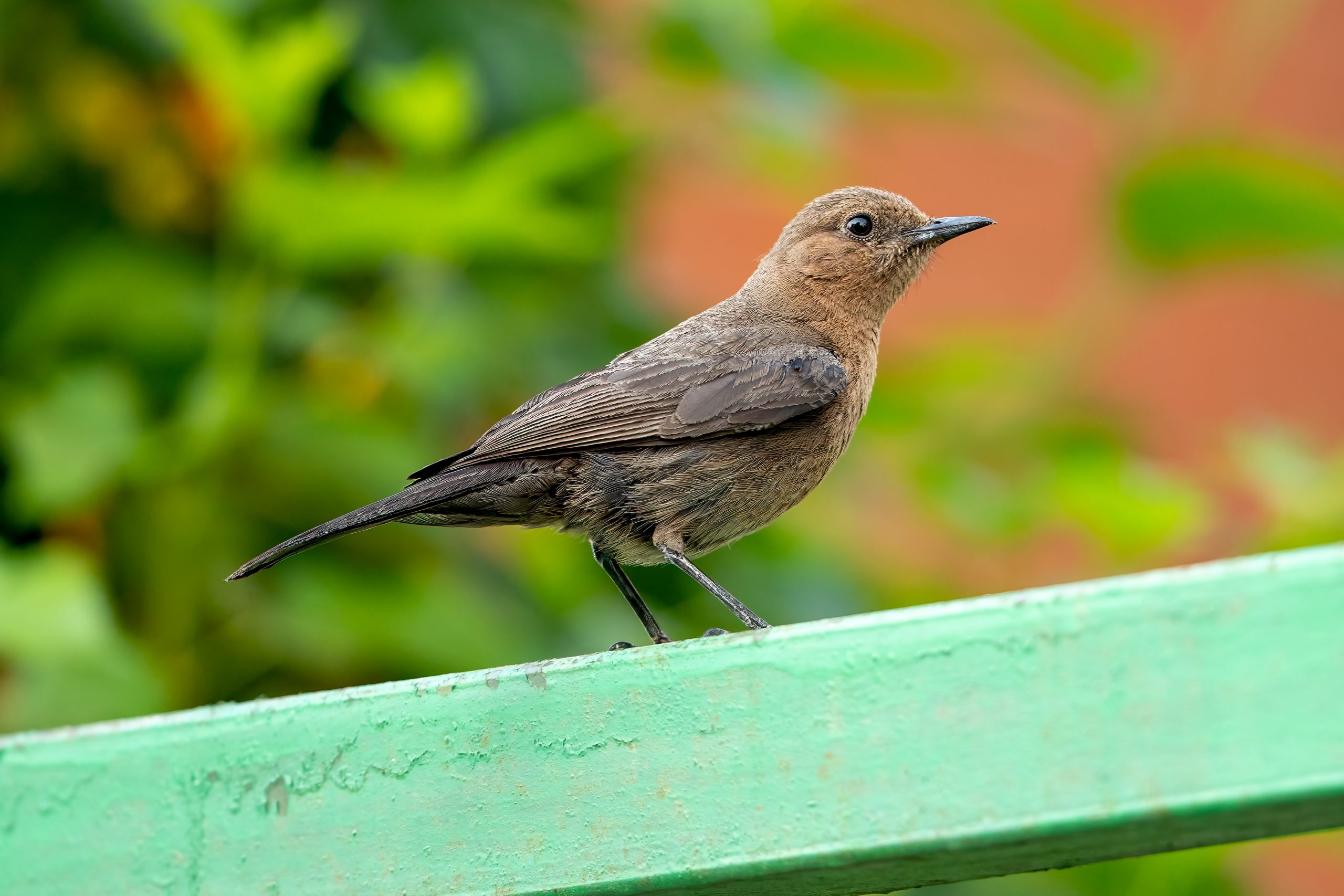Northern Wheatear
(Oenanthe oenanthe)
Description
The northern wheatear (Oenanthe oenanthe) is a small passerine bird with a broad range, breeding across Europe, Asia, and North America, and wintering in sub-Saharan Africa. It measures approximately 14.5-16 cm (5.7-6.3 inches) in length, with a wingspan of about 26-32 cm (10.2-12.6 inches). Males exhibit a distinct plumage during the breeding season, with blue-grey upperparts, black eye masks, and a white underbody contrasted by a peachy-orange throat. Females and non-breeding males are duller, with brownish-grey upperparts and buff underparts, lacking the bold eye mask. The northern wheatear can be confused with other species of wheatears, such as the western black-eared wheatear (Oenanthe hispanica) and the isabelline wheatear (Oenanthe isabellina), particularly females and males outside of the breeding season.
Diet & habitat
Northern wheatears are ground-dwelling birds that prefer open habitats such as rocky slopes, tundra, grasslands, and coastal areas. They are versatile in their habitat choices, thriving in both alpine and lowland environments. Their diet primarily consists of insects and other invertebrates, including beetles, ants, and spiders, which they capture using a characteristic “perch and pounce” technique. They also consume berries and small fruits, especially during the non-breeding season. Wheatears forage actively on the ground, often seen hopping and running to chase prey, occasionally leaping into the air to snatch flying insects.
Migration
Northern wheatears are long-distance migrants, undertaking remarkable journeys twice a year. During migration, they travel from their breeding grounds in the Northern Hemisphere to wintering areas in sub-Saharan Africa. This species holds the record for the longest migration of any passerine bird, and journeys can span over 14,000 kilometers (8,700 miles) for birds breeding in North America. They typically migrate in late summer to early autumn (August to September) and return to their breeding grounds in spring (April to May). Their migration route involves crossing significant barriers, such as the Sahara Desert and the Mediterranean Sea, demonstrating extraordinary endurance and navigational skills.
Nesting
The breeding season for northern wheatears extends from late April to July. They are monogamous, with pairs often returning to the same nesting sites year after year. Nests are constructed in natural cavities, crevices in rocks, or abandoned burrows. They are lined with soft materials like grasses, moss, and feathers. Females lay 4-7 pale blue eggs, which are incubated for about 12-14 days. Both parents participate in feeding the chicks, which fledge approximately 15-17 days after hatching. Northern wheatears typically raise one brood per season, though in some regions, they may have two.
Status
The northern wheatear is currently classified as least concern by the IUCN. Despite its wide range and large population, local declines have been noted in some areas, primarily due to habitat loss and degradation. The species’ long migratory routes also expose it to various threats, including adverse weather conditions and habitat changes in both breeding and wintering grounds. Conservation efforts focus on habitat preservation and mitigating the impacts of climate change and human activities on their migratory pathways.




